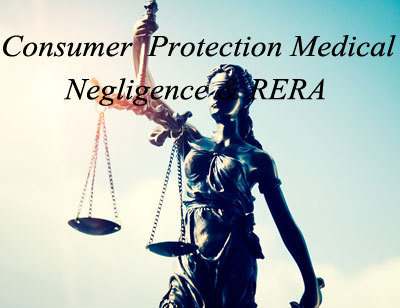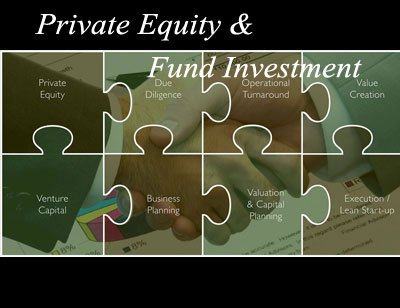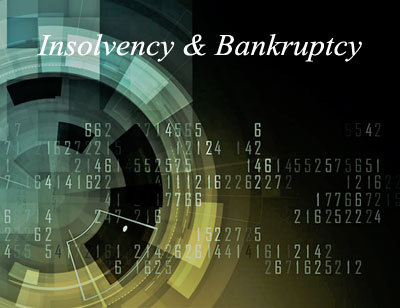#audit protection
Explore tagged Tumblr posts
Text
How A Tax Service Can Help Truck Drivers With Audit Protection?

For truck drivers, especially those who operate as independent contractors, the risk of an IRS audit is a significant concern. An audit can be time-consuming, stressful, and costly if not managed properly. A trucking tax service can play a crucial role in protecting truck drivers from the risks of audits by offering expert advice, thorough preparation, and support during the process. Here’s how a tax service can assist truck drivers with audit protection:
Ensuring Proper Tax Filing
One of the main ways a tax service helps truck drivers is by ensuring that all tax returns are filed accurately and on time. Tax services have in-depth knowledge of tax laws and regulations that apply specifically to truck drivers, such as deductions for mileage, fuel, vehicle maintenance, and other expenses related to running a trucking business. A tax service ensures that truck drivers take full advantage of these deductions while ensuring compliance with IRS rules. Properly filed returns minimize the risk of red flags that might trigger an audit.
Maintaining Accurate Record-Keeping
Maintaining detailed and organized records is critical in the event of an audit. A tax service can assist truck drivers in setting up and maintaining a comprehensive record-keeping system. This includes tracking expenses like fuel, maintenance, meals, lodging, and other costs associated with their trucking operations. Tax services can also recommend software or tools to simplify record-keeping, ensuring that all receipts, invoices, and documents are easily accessible and well-organized. Accurate and complete records help provide evidence for deductions and can serve as critical support during an audit.
Minimizing Audit Risks
Certain deductions and expenses commonly associated with the trucking industry may increase the likelihood of an audit. For example, claiming high mileage deductions or large vehicle depreciation can sometimes raise red flags for the IRS. A tax service helps mitigate this risk by ensuring that all deductions are legitimate, reasonable, and well-documented. They will review your return for any potential issues or inconsistencies that might attract the attention of the IRS and ensure that your filings are in line with current tax laws.
Audit Representation and Support
If an audit does occur, a tax service can provide valuable support and representation. Many tax services offer audit defense as part of their services, meaning they will act on your behalf when the IRS requests additional information. They will communicate directly with the IRS, gather the necessary documentation, and help explain any discrepancies or questions the IRS may have regarding your return. This representation is invaluable because it takes the burden off the truck driver, who may not have the experience or knowledge to navigate the complexities of an audit.
Providing IRS Notices and Letters
If the IRS sends any notices or letters regarding an audit or discrepancies in the tax return, a tax service can review these documents, interpret their meaning, and advise on how to proceed. In many cases, IRS letters are simply requests for more information or clarification. A tax service can respond to these letters appropriately, minimizing the chances of the situation escalating into a full-blown audit. Additionally, they can help ensure that any IRS issues are resolved quickly and efficiently.
Helping with Post-Audit Compliance
If an audit does result in adjustments to your tax filings, a tax service can help ensure that you comply with any changes the IRS makes to your tax liability. This might include helping to pay any additional taxes owed or adjusting future tax filings to reflect any new information or regulations. The tax service will also advise you on steps to take to prevent similar issues in the future, helping you maintain long-term audit protection.
Offering Peace of Mind
Perhaps one of the greatest benefits of working with a tax service for audit protection is the peace of mind it provides. Knowing that a professional is handling your tax filings, maintaining accurate records, and providing support if an audit arises reduces the stress and uncertainty often associated with tax matters. Truck drivers can focus on their business and operations without the looming worry of IRS audits.
In conclusion, a tax service offers invaluable audit protection for truck drivers by ensuring proper filing, maintaining organized records, minimizing audit risks, and providing representation during audits. With expert guidance and support, truck drivers can navigate the complexities of tax compliance and reduce the likelihood of IRS audits, saving both time and money in the process.
0 notes
Text
Financial Advisors Compliance Solutions
Explore essential Financial Advisors Compliance Solutions with Finpace. Stay updated on crucial compliance tools and strategies for financial professionals.

0 notes
Text

37 notes
·
View notes
Text

The Future of Justice: Navigating the Intersection of AI, Judges, and Human Oversight
One of the main benefits of AI in the justice system is its ability to analyze vast amounts of data and identify patterns that human judges may not notice. For example, the use of AI in the U.S. justice system has led to a significant reduction in the number of misjudgments, as AI-powered tools were able to identify potential biases in the data and make more accurate recommendations.
However, the use of AI in the justice system also raises significant concerns about the role of human judges and the need for oversight. As AI takes on an increasingly important role in decision-making, judges must find the balance between trusting AI and exercising their own judgement. This requires a deep understanding of the technology and its limitations, as well as the ability to critically evaluate the recommendations provided by AI.
The European Union's approach to AI in justice provides a valuable framework for other countries to follow. The EU's framework emphasizes the need for human oversight and accountability and recognizes that AI is a tool that should support judges, not replace them. This approach is reflected in the EU's General Data Protection Regulation (GDPR), which requires AI systems to be transparent, explainable and accountable.
The use of AI in the justice system also comes with its pitfalls. One of the biggest concerns is the possibility of bias in AI-generated recommendations. When AI is trained with skewed data, it can perpetuate and even reinforce existing biases, leading to unfair outcomes. For example, a study by the American Civil Liberties Union found that AI-powered facial recognition systems are more likely to misidentify people of color than white people.
To address these concerns, it is essential to develop and implement robust oversight mechanisms to ensure that AI systems are transparent, explainable and accountable. This includes conducting regular audits and testing of AI systems and providing clear guidelines and regulations for the use of AI in the justice system.
In addition to oversight mechanisms, it is also important to develop and implement education and training programs for judges and other justice professionals. This will enable them to understand the capabilities and limitations of AI, as well as the potential risks and challenges associated with its use. By providing judges with the necessary skills and knowledge, we can ensure that AI is used in a way that supports judges and enhances the fairness and accountability of the justice system.
Human Centric AI - Ethics, Regulation. and Safety (Vilnius University Faculty of Law, October 2024)
youtube
Friday, November 1, 2024
#ai#judges#human oversight#justice system#artificial intelligence#european union#general data protection#regulation#bias#transparency#accountability#explainability#audits#education#training#fairness#ai assisted writing#machine art#Youtube#conference
6 notes
·
View notes
Text
AT MY JOB we recently got an automatic book sorter that checks books in as they're returned and runs them down a conveyor belt to the correct bins to be shelved. super cool. it's fun to watch the robot work. so naturally. when it was installed. it was installed with a glass wall so patrons can see the sorter working. but that means that they can also see directly into the circulation workroom where everyone is trying to also do work. so people watch us work now. people pull out their phones and film the sorter and we're in the background of these videos. we have to sign media releases for the library to use our image but there's nothing we can do about our privacy regarding patrons filming us.
the other day i walked from the reserves room to the computer we use to tag books (which was placed in an area that isn't clearly visible from the sorter window). as i walked out of the reserves room i noticed a patron walk by. well, he must have noticed me too. because when he saw me he DOUBLED BACK and basically pressed his face against the window and craned his neck so that he could watch me at the computer.
when you work in a government funded library you surrender your right to privacy. i fucking guess.
#per the first amendment you're legally allowed to film govt workers#this is supposed to apply to the police so#that people can hold them accountable#but some dickheads will come into libraries and harass people who work there#this is called first amendment auditing. afaik it's only happened at our library once while i've worked here#but the first amendment doesn't protect people leering at library workers through the window that they all hate#i'm gonna start rushing at it like an aggressive gorilla idgaf
2 notes
·
View notes
Text
wow fuck sag-aftra for screwing over video game voice actors
#sag-aftra#vas talking about forming their own union and i hope they do#because holy shit#sag-aftra didn't even just approve va ai voice use in video games#they also went so far as to fucking partner with an ai business (replica)#and claimed that they consulted vas about it but literally every video game va around is saying that they absolutely were NOT consulted#we may be looking at a va strike (current discussion is whether to strike or to just form a separate union for video game vas)#(because of how they are continually screwed over by the union)#look sag-aftra has done a lot of good for film/tv actors#i'm not going to deny that#super super important stuff like establishing work conditions and child actor's rights and protections against abuse#both on set and in audition rooms#but damn they really do keep screwing over video game vas
9 notes
·
View notes
Text


















Equi Corp Legal has the best lawyers in Delhi NCR
#Corporate Disputes Litigation Lawyers in Delhi#Insolvency Bankruptcy NCLT Lawyers in Delhi#Private Equity Funds Investment Transaction Advisory M&A Lawyers in Delhi#Technology E-Commerce Fintech Blockchain Lawyers in Delhi#Regulatory Compliance Legal Audits in Delhi Noida#Director Investor Shareholder Dispute Litigation Lawyers in Delhi#Sports Gaming lawyers in Delhi#Startup Investor Lawyers in Delhi#Banking NBFC Financial Services DRT Debt Restructuring Lawyers in Delhi#Corporate lawyers in Delhi#Arbitration Lawyers in Delhi#Consumer Protection Lawyers in Delhi#Commercial Civil Disputes Litigation Lawyers in Delhi
10 notes
·
View notes
Text
ehen the giraffe said they didnt even know how many times she had done it i gasped
#what do you mean she countlessly relived the year leading up to the moment where she first felt like a stage girl to protect herself and#everyone else from feeling the pain and sorrow of losing in the auditions. what the fuck are you talking abt im speaking directly into yo#your ear now do you fucking hear me. and what do you mean that hikari's devotion to her own starlight and the promise she made w karen#was what broke banana girl out of her own obsessive time loop. im goign to jump off a bridge#protecting everyone from losing everything. and then losing to the one person who did lose everything.
5 notes
·
View notes
Text
In the early twenty-first century United States, financial and medical institutions have legal restrictions on communicating with consumers. Private communication involving financial or medical records can come through physical mail or through private internal messaging systems. Regular email, convenient as it is, does not meet the legal requirements, so bank statements cannot be sent by email.
What can be sent by email, however, is notification of the existence of a message on the bank's internal system. This lets people know that they need to log in to the bank institution to see the message. Because of the requirements, the details are intentionally left vague to avoid giving any information of note to any potential interceptor.
As with most forms of mail and email, financial institutions frequently have messages that are not bank statements, such as introductions, terms and conditions changes, offers, etc. While all of these can be sent via email, it is less work for them to use the internal messaging service they control, and to let the automated "you have a message" email get sent out.
The above is an example of observational comedy that people in the early twenty-first century would have ample experience with.

#period novel details#usually there is an explanation for common unusual behavior#and it IS technically a good thing#this is an example of consumer protection#since it theoretically helps protect against fraud and identity theft#and the internal messaging systems makes it easier to audit banks#so I am not going to complain about consumer protections#even if there are some silly consequences
3K notes
·
View notes
Text
What Are Forensic Audits? How To Use Them | Dhiren Shah & CO
Forensic Audits – Discover how Forensic Audits Services in Ahmedabad, Gujarat, can protect your business. Learn what Forensic Audits are and their benefits with Dhiren Shah & CO.
Google Map:--> https://maps.app.goo.gl/e4VHyeFHj6uf2TGe7
What Are Forensic Audits? How To Use Them | Dhiren Shah & CO, What Are Forensic Audits? How To Use Them, Forensic Audits Services Ahmedabad, Forensic Audits Services Ahmedabad Gujarat, Forensic Audits, How Forensic Audits Can Protect Your Business, Forensic Audits, Forensic Audit, Forensic Auditing, Forensic Accounting, Forensic Accountants, Diploma in Forensic Audit, Forensic Auditors, www.dhirenshahandco.com/servicess-forensic-audits-services-in-ahmedabad-gujarat.php, Dhiren Shah & CO
#What Are Forensic Audits? How To Use Them | Dhiren Shah & CO#What Are Forensic Audits? How To Use Them#Forensic Audits Services Ahmedabad#Forensic Audits Services Ahmedabad Gujarat#Forensic Audits#How Forensic Audits Can Protect Your Business#Forensic Audit#Forensic Auditing#Forensic Accounting#Forensic Accountants#Diploma in Forensic Audit#Forensic Auditors#www.dhirenshahandco.com/servicess-forensic-audits-services-in-ahmedabad-gujarat.php#Dhiren Shah & CO
0 notes
Text
5 Data Security Features Every HRMS Must Have to Protect Employee Information
With the growing reliance on HRMS (Human Resource Management Systems) to handle sensitive employee information, data security has become a top priority for organizations worldwide. HRMS platforms store critical data, including personal details, payroll, banking information, medical records, and performance reviews. A breach in this data not only results in legal ramifications but also damages employee trust and organizational reputation.
To address these risks and meet the challenges of modern data privacy requirements, every HRMS must include advanced security features. Below, we dive deeper into the five essential data security features that are non-negotiable for any HRMS in 2025.
1. Encryption for Data Protection
Encryption is a cornerstone of data security. It ensures that even if data is intercepted, it remains unreadable to unauthorized individuals or malicious actors.
How Encryption Works:
Data is converted into a coded format using cryptographic algorithms.
When stored (at rest) or transferred (in transit), the data is encrypted.
Only authorized users with decryption keys can access or read the data.
Why It’s Essential for HRMS: HRMS platforms handle highly sensitive employee information, such as salary details, tax forms, and identification numbers. Encryption ensures this data remains secure, even if hackers gain access to the system.
Practical Example: HRMS platforms like uKnowva HRMS use end-to-end encryption to secure personal and financial data. Even in the event of a breach, encrypted data would be meaningless to unauthorized users without the proper decryption key.
2. Role-Based Access Control (RBAC)
Not every user needs access to all data stored in an HRMS. Role-Based Access Control (RBAC) limits access based on the user’s role and responsibilities.
How RBAC Works:
Each user is assigned specific access privileges based on their job function.
For example, HR professionals may access performance reviews, while payroll staff can view salary data.
Admins can define roles and set permissions accordingly.
Why It’s Essential for HRMS: RBAC ensures that sensitive employee data is not exposed to unnecessary individuals, reducing the risk of internal data breaches or human errors.
Practical Example: With RBAC in uKnowva HRMS, only managers or authorized personnel can view confidential employee records. Regular employees are restricted to viewing their personal data, ensuring both security and transparency.
3. Audit Trails for Monitoring Activity
Audit trails are critical for accountability and transparency. They record every action performed on the system, making it easy to track who accessed, edited, or deleted data.
How Audit Trails Work:
Each user action, such as logging in, accessing files, or updating information, is logged and timestamped.
The system maintains a history of changes, showing what data was altered, by whom, and when.
Why It’s Essential for HRMS:
Audit trails help organizations identify unusual activity, such as unauthorized access.
In the event of a security breach or data issue, logs provide a clear record for investigations and compliance audits.
Practical Example: In uKnowva HRMS, administrators can access detailed audit trails to monitor data access patterns. If an employee accesses sensitive data outside their scope, the system generates an alert, allowing quick corrective action.
4. Multi-Factor Authentication (MFA)
Passwords alone are no longer sufficient to protect sensitive data. Multi-Factor Authentication (MFA) strengthens security by requiring users to verify their identity using multiple methods.
How MFA Works:
Users must provide two or more forms of verification to log in.
Common methods include:
Something you know: Passwords or PINs.
Something you have: A mobile device for OTPs or authentication apps.
Something you are: Biometrics like fingerprints or facial recognition.
Why It’s Essential for HRMS:
MFA prevents unauthorized access, even if passwords are compromised.
It’s particularly crucial for HRMS portals, as they often allow remote access to sensitive employee data.
Practical Example: Employees using uKnowva HRMS are required to log in using their password and a one-time passcode (OTP) sent to their mobile device. For added security, biometric authentication can also be enabled.
5. Automated Compliance Features
Compliance is a growing challenge with the increasing complexity of global data privacy laws. Automated compliance features help organizations adhere to regulations seamlessly.
How Automated Compliance Works:
The HRMS system is configured to align with regulatory requirements, such as GDPR, CCPA, or local laws.
It enforces compliance rules, such as data retention limits and privacy policies, without manual intervention.
Alerts are generated if potential violations occur, allowing for immediate corrective action.
Why It’s Essential for HRMS:
Non-compliance with data privacy laws can lead to hefty fines and legal penalties.
Automated compliance ensures organizations stay updated with changing regulations while reducing human error.
Practical Example: uKnowva HRMS includes built-in compliance tools that enforce GDPR and CCPA guidelines. It can automatically delete employee data after the required retention period, ensuring compliance with data protection laws.
Final Thoughts
In 2025, protecting employee data is not just about meeting regulatory requirements—it’s about fostering trust, mitigating risks, and ensuring business continuity. By adopting HRMS platforms like uKnowva HRMS, which offer robust features such as encryption, RBAC, audit trails, MFA, and automated compliance, organizations can safeguard sensitive information effectively.
Investing in these security features is no longer optional—it’s essential for navigating the complexities of the modern data privacy landscape while maintaining employee confidence and organizational reputation.3
#ensure data privacy#hrms software#hr management#data protection#data privacy#uKnowva HRMS#audit trails#data encryption
0 notes
Text
Solar Safety Audit Services | EcoSoch Solar
We provides pre-installation safety audits, assessing site readiness and recommending necessary changes for protective devices, shadow, and roof access.

0 notes
Text

5 notes
·
View notes
Text
Les obligations des entreprises en matière de protection contre la fraude
Les obligations des entreprises en matière de protection contre la fraude

https://nf-avocats.fr/les-obligations-des-entreprises-en-matiere-de-protection-contre-la-fraude/
#AuditInterne, #Conformité, #Entreprise, #ÉthiqueDesAffaires, #Fraude, #GestionDesRisques, #GouvernanceDEntreprise, #Législation, #Les, #NormesDeSécurité, #Obligations, #ObligationsDesEntreprises, #ObligationsLégales, #Pour, #Prendre, #PréventionDeLaFraude, #ProtectionContreLaFraude, #Réglementation, #Responsabilité, #ResponsabilitéDesEntreprises, #SécuritéFinancière, #SensibilisationÀLaFraude, #Séparation
#audit interne#conformité#entreprise#éthique des affaires#fraude#gestion des risques#gouvernance d'entreprise#législation#les#normes de sécurité#obligations#obligations des entreprises#obligations légales#pour#prendre#prévention de la fraude#protection contre la fraude#réglementation#responsabilité#responsabilité des entreprises#sécurité financière#sensibilisation à la fraude#séparation
1 note
·
View note
Text
Government Policies for a Green Economy: Incentives and Regulations

Green Economy A successful transition to a green economy requires a combination of public and private sector efforts, Green Economy with governments playing a crucial role in setting the framework for this transformation. Policies often target sectors such as energy, transportation, agriculture, waste management, and construction, which are significant contributors to environmental impacts. In this context, incentives and regulations serve as two sides of the policy coin, ensuring both the encouragement of sustainable practices and the enforcement of environmental protection.
One of the main goals of government policies for a green economy is to shift economic activity toward more sustainable practices. This involves reducing greenhouse gas emissions, promoting renewable energy, and ensuring that economic growth is decoupled from environmental degradation. To achieve these goals, governments employ a wide range of tools, including tax breaks, subsidies, grants, carbon pricing mechanisms, and strict environmental regulations.
A green economy also emphasizes social inclusiveness, Green Economy ensuring that the transition to sustainability benefits all members of society, particularly vulnerable groups who are most affected by environmental degradation. Green Economy Government policies often include provisions for job creation in green industries, education and training for new skills, and social protection measures to ensure that no one is left behind in the transition.
This section will delve into six key areas of government policies for a green economy: renewable energy incentives, carbon pricing mechanisms, green transportation policies, sustainable agriculture support, waste management and recycling regulations, and financial incentives for green innovation.
Renewable Energy Incentives Green Economy
One of the cornerstones of any green economy policy framework is the promotion of renewable energy sources. Governments have introduced a range of incentives to encourage the production and consumption of renewable energy, such as wind, solar, and hydropower. These incentives are critical for reducing reliance on fossil fuels, which are the primary source of greenhouse gas emissions.
Renewable energy incentives often take the form of subsidies and tax breaks. For instance, many governments offer production tax credits (PTCs) and investment tax credits (ITCs) to companies that generate renewable energy or invest in renewable energy infrastructure. These financial incentives lower the cost of renewable energy projects, making them more competitive with traditional fossil fuel-based energy sources.
Feed-in tariffs (FITs) are another common incentive mechanism. Green Economy Under a FIT program, renewable energy producers are guaranteed a fixed price for the electricity they generate, often over a long-term contract. This provides a stable revenue stream and reduces the financial risk associated with renewable energy investments. Net metering programs, which allow individuals and businesses to sell excess renewable energy back to the grid, are another way governments encourage the adoption of renewable technologies.
Governments also support renewable energy through research and development (R&D) funding. Green Economy By investing in the development of new technologies, governments can help bring down the cost of renewable energy and make it more accessible. Many governments also provide grants and low-interest loans for renewable energy projects, particularly for smaller-scale projects such as rooftop solar installations.
In addition to financial incentives, governments often mandate the use of renewable energy through renewable portfolio standards (RPS). An RPS requires utilities to obtain a certain percentage of their electricity from renewable sources, creating a guaranteed market for renewable energy. This not only supports the growth of the renewable energy industry but also helps reduce the overall carbon footprint of the energy sector.
Green Economy The combination of financial incentives and regulatory mandates has been instrumental in driving the rapid growth of renewable energy in many parts of the world. Countries such as Germany, Denmark, and China have become global leaders in renewable energy production, thanks in large part to strong government policies that promote green energy development.
Carbon Pricing Mechanisms
Carbon pricing is a critical tool in the fight against climate change and a key component of government policies for a green economy. By putting a price on carbon emissions, governments create an economic incentive for businesses and individuals to reduce their carbon footprint. There are two main types of carbon pricing mechanisms: carbon taxes and cap-and-trade systems.
A carbon tax directly sets a price on carbon by levying a tax on the carbon content of fossil fuels. This encourages businesses and consumers to reduce their use of carbon-intensive energy sources and shift toward cleaner alternatives. The revenue generated from carbon taxes is often used to fund green initiatives, such as renewable energy projects or energy efficiency programs, or to provide rebates to low-income households to offset higher energy costs.
Cap-and-trade systems, also known as emissions trading schemes (ETS), work by setting a limit (or cap) on the total amount of greenhouse gas emissions that can be emitted by covered entities, such as power plants or industrial facilities. Companies are issued emission allowances, which they can trade with one another. Companies that can reduce their emissions at a lower cost can sell their excess allowances to companies that face higher costs for reducing emissions. This creates a market for carbon allowances and incentivizes businesses to invest in cleaner technologies.
Both carbon taxes and cap-and-trade systems are designed to internalize the environmental cost of carbon emissions, making it more expensive to pollute and more profitable to invest in sustainable practices. These mechanisms can drive innovation, as businesses seek out new technologies and processes to reduce their carbon liabilities.
Several countries and regions have implemented carbon pricing policies with varying degrees of success. The European Union’s Emissions Trading System (EU ETS) is one of the largest and most established cap-and-trade programs in the world. Canada has implemented a nationwide carbon tax, with revenue returned to households through rebates. In the United States, some states, such as California, have implemented their own cap-and-trade programs in the absence of a national carbon pricing policy.
However, carbon pricing mechanisms face challenges, including political opposition and concerns about economic competitiveness. In some cases, businesses argue that carbon pricing increases costs and puts them at a disadvantage compared to competitors in countries without similar policies. To address these concerns, governments often include provisions to protect industries that are vulnerable to international competition, such as offering rebates or exemptions for certain sectors.
Green Transportation Policies
Transportation is a major source of greenhouse gas emissions, particularly in urban areas. To promote a green economy, governments are implementing a range of policies aimed at reducing emissions from the transportation sector. These policies focus on promoting the use of public transportation, encouraging the adoption of electric vehicles (EVs), and improving fuel efficiency standards.
One of the most effective ways to reduce transportation emissions is to encourage the use of public transportation. Governments invest in expanding and improving public transit systems, such as buses, trains, and subways, to make them more accessible and attractive to commuters. By providing reliable and affordable public transportation options, governments can reduce the number of cars on the road and lower overall emissions.
In addition to improving public transportation, governments are offering incentives for the purchase of electric vehicles (EVs). These incentives often take the form of tax credits or rebates for EV buyers, which help offset the higher upfront cost of electric vehicles compared to traditional gasoline-powered cars. Some governments also offer additional perks for EV owners, such as access to carpool lanes or free parking in city centers.
Governments are also investing in the infrastructure needed to support electric vehicles, such as building charging stations. A lack of charging infrastructure is often cited as a barrier to EV adoption, so governments play a critical role in addressing this challenge. By providing grants or partnering with private companies, governments can help build a network of charging stations that makes EVs a more convenient option for drivers.
Another important component of green transportation policies is improving fuel efficiency standards for cars and trucks. Governments set regulations that require automakers to produce vehicles that meet certain fuel efficiency targets, which helps reduce the amount of fuel consumed and the emissions produced by the transportation sector. Some governments also implement vehicle emissions standards, which limit the amount of pollutants that cars and trucks can emit.
In addition to these policies, governments are encouraging the use of alternative modes of transportation, such as biking and walking. Investments in bike lanes, pedestrian infrastructure, and bike-sharing programs make it easier for people to choose low-emission forms of transportation. These efforts not only reduce emissions but also improve public health by promoting physical activity.
Sustainable Agriculture Support
Agriculture is both a contributor to and a victim of environmental degradation. It is responsible for significant greenhouse gas emissions, deforestation, water use, and pollution from fertilizers and pesticides. At the same time, agriculture is highly vulnerable to the impacts of climate change, including more frequent droughts, floods, and changing weather patterns. As a result, governments are increasingly focusing on promoting sustainable agricultural practices as part of their green economy policies.
One of the key ways governments support sustainable agriculture is through financial incentives for farmers who adopt environmentally friendly practices. These incentives can take the form of subsidies, grants, or low-interest loans for practices such as organic farming, agroforestry, and conservation tillage. By providing financial support, governments encourage farmers to invest in sustainable practices that might otherwise be cost-prohibitive.
Governments also provide technical assistance and education to help farmers transition to more sustainable practices. This can include training programs on topics such as water conservation, soil health, and pest management, as well as access to research and technology that supports sustainable farming. Extension services, which provide hands-on assistance to farmers, are another important tool for promoting sustainable agriculture.
In addition to financial and technical support, governments implement regulations to reduce the environmental impact of agriculture. These regulations can include restrictions on the use of certain pesticides and fertilizers, requirements for buffer zones to protect water sources from agricultural runoff, and mandates for the reduction of greenhouse gas emissions from livestock and manure management.
Governments are also working to promote more sustainable food systems by encouraging the consumption of locally produced and organic foods. Public procurement policies, which require government institutions such as schools and hospitals to purchase a certain percentage of their food from sustainable sources, are one way governments support the development of local, sustainable food systems.
Another important aspect of sustainable agriculture policies is protecting biodiversity and promoting ecosystem services. Governments often provide incentives for farmers to preserve natural habitats on their land, such as wetlands, forests, and grasslands, which provide important ecosystem services such as carbon sequestration, water filtration, and pollination. By promoting biodiversity and ecosystem health, governments help ensure that agricultural systems are more resilient to environmental changes.
Waste Management and Recycling Regulations
Effective waste management is a critical component of a green economy. Governments play a key role in regulating waste disposal, promoting recycling, and encouraging the reduction of waste generation. These efforts are aimed at reducing the environmental impact of waste, including greenhouse gas emissions from landfills, pollution from improper disposal, and the depletion of natural resources through excessive consumption.
One of the main ways governments regulate waste is by setting standards for waste disposal. This includes regulating landfills, incinerators, and hazardous waste facilities to ensure that they operate in an environmentally responsible manner. Governments also implement bans or restrictions on certain types of waste, such as single-use plastics, to reduce the amount of waste that ends up in landfills or the environment.
In addition to regulating waste disposal, governments are increasingly focusing on promoting recycling and waste reduction. Many governments have implemented extended producer responsibility (EPR) programs, which require manufacturers to take responsibility for the disposal of the products they produce. This can include requirements for companies to fund recycling programs or take back products at the end of their life cycle.
Governments also implement policies to encourage households and businesses to recycle more. This can include providing curbside recycling services, setting recycling targets, and offering incentives for recycling, such as deposit return schemes for beverage containers. Public awareness campaigns and education programs are also important tools for promoting recycling and waste reduction.
In some cases, governments use economic instruments to promote waste reduction, such as charging fees for waste disposal or providing financial incentives for businesses that reduce waste. Pay-as-you-throw programs, which charge households based on the amount of waste they generate, are one example of how governments use pricing mechanisms to encourage waste reduction.
Another important component of waste management policies is promoting the circular economy, which focuses on keeping materials in use for as long as possible through recycling, reusing, and remanufacturing. Governments support the circular economy by providing incentives for businesses that adopt circular practices, such as designing products for durability and recyclability, and by setting targets for reducing waste and increasing recycling rates.
Source :
Government Policies for a Green Economy: Incentives and Regulations
#Carbon Pricing Mechanisms#Circular Economy Policies#Clean Energy Subsidies#Climate Change Mitigation Strategies#Climate Resilience Planning#Community Sustainability Programs#Eco-Friendly Transportation Initiatives#Eco-Tourism Development Strategies#Energy Efficiency Standards#Environmental Policy Frameworks#Environmental Protection Regulations#Government Grants For Green Projects#Government Policies For A Green Economy#Green Building Regulations#Green Job Creation Initiatives#Green Tax Incentives#Incentives For Energy Audits#Incentives For Sustainable Development#Investment In Green Technologies#Low-Emission Vehicle Incentives#Pollution Control Policies#Public Transport Expansion Regulations#Regulations Promoting Renewable Energy#Renewable Energy Certificates#Smart City Regulations#Sustainable Agriculture Policies#Sustainable Forestry Practices#Sustainable Urban Development Policies#Waste Management Policies#Water Conservation Regulations
1 note
·
View note
Text
Installation of Fire Alarm Systems

Installation of Fire Alarm Systems

1. Importance of Fire Alarm Systems
The importance of fire alarm systems is evident in several aspects:
Protection from Hazards: They alert individuals in case of a fire, providing sufficient time to evacuate the building.
Reducing Financial Losses: Early detection of fire can minimize material damage and aid in preserving property.
Compliance with Legal Requirements: In many countries, installing fire alarm systems is mandatory in public and commercial buildings.
2. Types of Fire Alarm Systems
Fire alarm systems include several types, such as:
Manual Alarm Systems: Such as manual pull stations activated by individuals during an emergency.
Automatic Alarm Systems: These rely on sensors to detect smoke or heat and automatically issue alerts.
3. Steps for Installing Fire Alarm Systems
The steps for installing fire alarm systems can be summarized as follows:
Initial Assessment: Evaluate the building and identify the most vulnerable areas.
Choosing the Appropriate System: Select the suitable type of system based on the building’s needs.
Installation: Install sensors, alarms, and control panels professionally.
Testing and Confirmation: After installation, the system must be tested to ensure efficient operation.
4. Regular Maintenance
To ensure the continuous operation of the fire alarm system, regular maintenance is crucial. Maintenance includes:
Sensor Checks: Ensure their effectiveness and proper functioning.
Device Testing: Verify that all alarms operate correctly.
System Updates: Consider updating the system to keep pace with technological advancements.

5. Choosing a Professional Installation Company
It’s important to choose a reliable company for installing fire alarm systems. The company should have:
Experience: A long history in installing and maintaining alarm systems.
Licensing: Be licensed and certified by official authorities.
After-Sales Service: Provide support and maintenance services post-installation.
Installing fire alarm systems is a crucial step in protecting lives and property. The right system and professional installation ensure the system’s effectiveness. Don’t hesitate to contact Bidaya Company for a free consultation and reliable installation services.
Installation of Fire Alarm Systems
Fire alarm systems are among the most important safety elements in buildings, playing a vital role in protecting lives and property. Therefore, installing these systems is a complex process requiring expertise and technical knowledge. Here are additional details about installing fire alarm systems.
1. System Design
Before starting the installation process, the fire alarm system must be designed based on several factors, such as:
Building Size: Larger buildings require more complex systems that include multiple sensors and alarms.
Building Usage: The system design varies depending on the building’s purpose (residential, commercial, industrial).
Construction Materials: The materials used in the building affect how smoke and heat spread, impacting sensor installation locations.
2. Types of Sensors
Fire alarm sensors differ based on how they detect fire:
Smoke Sensors: Detect smoke particles in the air and vary between ionization and photoelectric smoke sensors.
Heat Sensors: Detect abnormal increases in temperature and include fixed and two-point sensors.
Flame Sensors: Detect flames using infrared or visible light and are effective in environments where high temperatures can cause false alarms.
3. Control Panels
Central control panels are essential components of the fire alarm system. They manage all sensors and alarms and include:
System Status Display: Shows the status of each sensor in the system, indicating whether it is in normal operation or detecting a fire.
Interaction Capabilities: Allow the user to interact with alerts and manually control the system.
Event Logging and Documentation: Some panels have event logging features, allowing for tracking and documenting any alerts that occur.
4. Safety Procedures During Installation
When installing a fire alarm system, it’s essential to adhere to several safety procedures to avoid any risks, including:
Power Shutdown: Ensure that all electrical systems are turned off during installation to avoid electrical shocks.
Using Appropriate Equipment: Utilize suitable installation tools and equipment to prevent damage to any components during installation.
Providing Adequate Ventilation: If using chemicals or adhesives, ensure proper ventilation to avoid inhaling harmful substances.

5. Training and Awareness
After installing the fire alarm system, training for workers or residents in the building on how to use the system is vital. Training includes:
Recognizing Fire Alarms: Clarifying how to recognize alarm signals and the importance of rapid response.
Evacuation Plans: Explaining the evacuation plan in case of fire, including safe routes and designated meeting areas.
6. Modern Technologies in Fire Alarm Systems
Modern technologies used in fire alarm systems include:
Integration with Other Security Systems: Such as surveillance and cameras, providing an additional level of security.
Alerts via Smartphones: Sending instant alerts to mobile devices in case of fire, allowing for quick action.
Artificial Intelligence Systems: Using AI to analyze data for detecting patterns and potential threats.
Installing fire alarm systems requires technical knowledge and high expertise to ensure their effective operation. It is essential to choose a reliable company like Bidaya Company to ensure the installation of a comprehensive system that complies with international safety standards and achieves maximum security.
Installation of Fire Alarm Systems
The installation of fire alarm systems is a vital step in enhancing safety within any building. These systems require careful planning and a deep understanding of the available technologies. In this context, we will delve into more details about installing fire alarm systems, along with keywords that enhance the article’s visibility in search engines.
1. Preliminary Planning for System Design
Before commencing the installation process, specialists should conduct a comprehensive site assessment. This includes:
Studying the Building Layout: Analyzing the layout to identify the most critical points for sensor installation, such as hallways, rooms, and enclosed spaces.
Identifying Hazard Sources: Pinpointing potential fire outbreak locations, such as kitchens and storage areas, to ensure nearby sensors are installed.

2. Modern Detection Technologies
Modern technologies used in fire alarm systems employ advanced methods to improve detection accuracy, including:
Advanced Sensors: Such as smart sensors capable of distinguishing between smoke from a fire and smoke from cooking.
Nano Technology: Utilizing it to develop lightweight and compact sensors that enhance system effectiveness.
3. Integration with Other Security Systems
Integrating fire alarm systems with other security systems in the facility provides an additional level of protection:
Automatic Fire Suppression Systems: Can work in tandem with alarms to extinguish fire in its early stages.
Audible Alarm Systems: Alert people inside the building to evacuate and can be connected to a public address system.
4. Installation Guidelines
When installing fire alarm systems, a set of guidelines must be followed to ensure efficient installation:
Avoid Interference: Sensors should be installed away from excessive heat sources, such as electric bulbs.
Consider Heights: Determine the appropriate height for sensor installation based on their type. For example, smoke sensors should be installed 30-60 cm from the ceiling.
Correct Orientation: Position sensors effectively toward areas where smoke accumulates.
5. Performance Testing
After installation, comprehensive performance tests should be conducted to verify the system’s effectiveness:
Simulation Tests: Simulate fire scenarios using artificial smoke to ensure the system responds appropriately.
Performance Evaluation: Measure the sensors’ response time and accuracy in detecting fire locations.
6. Periodic Maintenance Strategies
Fire alarm systems require regular maintenance to ensure ongoing efficiency:
Schedule Inspections: Develop a plan to inspect systems periodically, at least once every six months.
System Updates: Consider updating the system in line with the latest available technologies.

Keywords
Installation of fire alarm systems
Fire protection
Automatic alarm systems
Smoke sensors
Fire system maintenance
Fire detection technologies
Integrated security systems
Importance of alarm systems
Fire system performance testing
Design of fire alarm systems
The installation of fire alarm systems requires dedication and high technical knowledge. Ensure to choose a professional company like Bidaya Company to guarantee an effective system installation that achieves the highest safety standards. If you have any inquiries or need consultation, please do not hesitate to contact us!
#Top-rated fire safety services Dammam#Professional fire suppression system installation Jeddah#Fire safety audits and system installation Jubail#Fire fighting network installation company near me#Certified fire alarm system installers Riyadh#Affordable fire protection installation Medina
0 notes